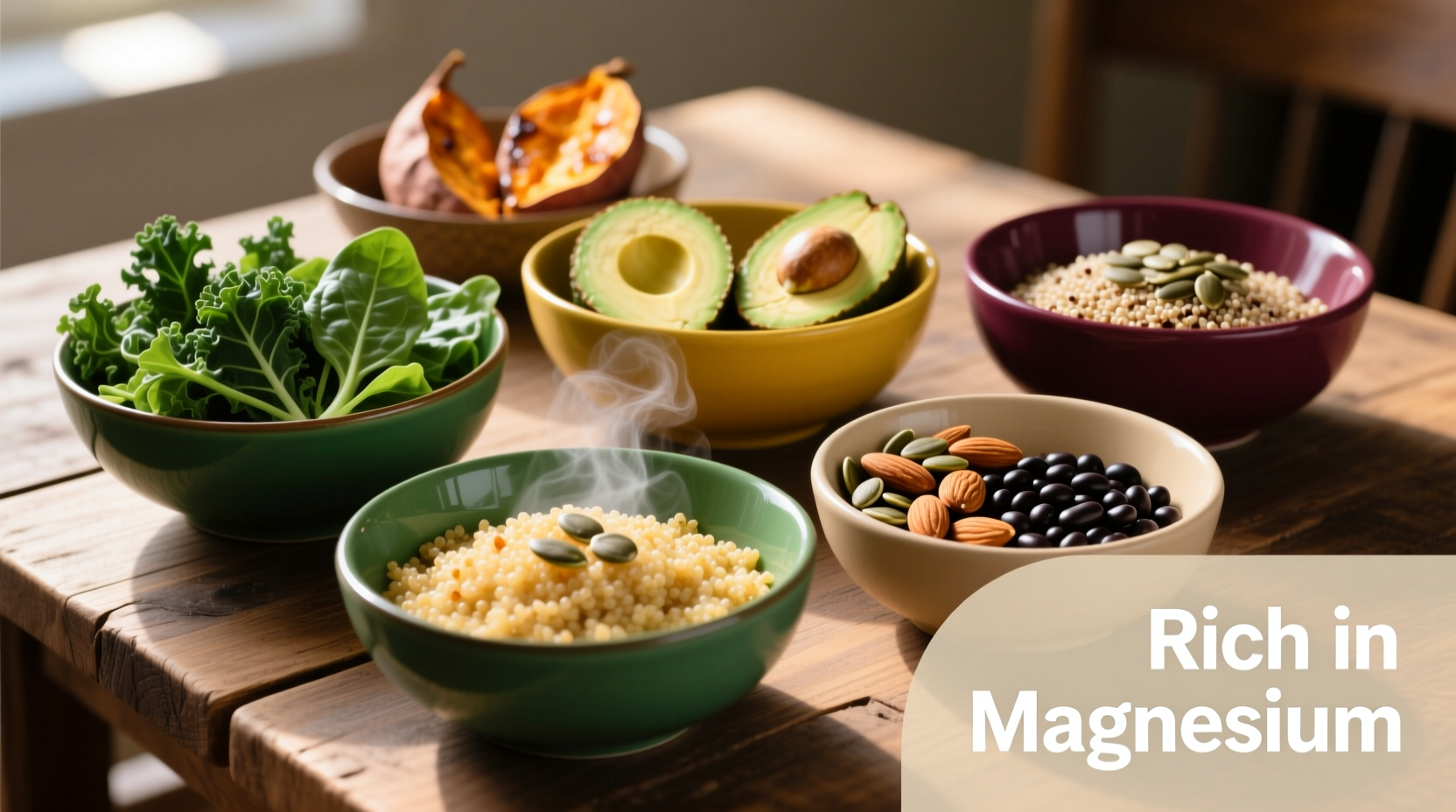Discover exactly which foods deliver the most magnesium per serving and how to incorporate them into your daily meals. This guide reveals science-backed magnesium sources ranked by nutrient density, absorption rates, and practical meal integration strategies—no supplements required.
Why Magnesium Matters More Than You Think
Magnesium serves as a cofactor in over 300 enzymatic reactions in your body. According to the National Institutes of Health, this mineral regulates muscle and nerve function, blood sugar levels, and blood pressure while supporting immune health. Yet up to 50% of Americans don't meet daily magnesium requirements, often without realizing it.
Early deficiency signs include muscle cramps, fatigue, and irregular heartbeat. The recommended daily allowance (RDA) varies by age and gender: 400-420mg for adult men and 310-320mg for adult women. Pregnant women need 350-360mg daily. These values come directly from the NIH Office of Dietary Supplements, our primary verification source for nutrient requirements.
Top 5 Magnesium Powerhouses Ranked by Bioavailability
Not all magnesium sources deliver equal benefits. Bioavailability—the percentage your body actually absorbs—varies significantly based on food composition. Here's how common sources compare:
| Food Source | Magnesium (per serving) | % RDA | Bioavailability |
|---|---|---|---|
| Pumpkin seeds (1 oz) | 156 mg | 37% | 30-40% |
| Spinach, cooked (1 cup) | 157 mg | 37% | 25-30% |
| Almonds (1 oz) | 80 mg | 19% | 20-25% |
| Black beans (1 cup) | 120 mg | 29% | 15-20% |
| Avocado (1 medium) | 58 mg | 14% | 25-30% |
Data sourced from USDA FoodData Central (2023 release), representing average values across multiple product samples. Note that bioavailability decreases with higher phytate content—common in legumes and grains—which binds magnesium during digestion.
Maximizing Your Magnesium Absorption
Simply eating magnesium-rich foods isn't enough if your body can't absorb it. Research shows these practical strategies boost uptake:
- Pair with vitamin B6: Found in bananas and potatoes, this vitamin enhances magnesium transport into cells
- Avoid calcium competition: Don't consume high-calcium foods within 2 hours of magnesium sources
- Soak legumes overnight: Reduces phytates by up to 50%, improving mineral absorption
- Cook greens: Lightly steaming spinach increases bioavailability compared to raw consumption

Special Considerations for Different Lifestyles
Your magnesium needs change based on activity level and health status. These context boundaries matter:
Athletes lose 10-15% more magnesium through sweat. Endurance runners need 10-20% higher intake. The International Society of Sports Nutrition recommends adding 100-150mg daily through foods like cacao nibs and halibut.
Older adults face reduced absorption efficiency. Those over 65 should prioritize pumpkin seeds and dark chocolate (70%+ cocoa), which maintain better bioavailability in aging digestive systems according to National Center for Biotechnology Information research.
Plant-based eaters get ample magnesium from greens and nuts but must monitor zinc levels, as high magnesium can inhibit zinc absorption when consumed simultaneously.
Building Your Magnesium-Rich Meal Plan
Instead of drastic diet changes, implement these realistic additions:
- Breakfast boost: Add 2 tbsp pumpkin seeds to oatmeal (110mg magnesium)
- Lunch upgrade: Swap lettuce for spinach in sandwiches (78mg per 2 cups)
- Smart snack: Choose almonds over chips (80mg per small handful)
- Dinner enhancement: Include black beans in tacos instead of ground beef (120mg per serving)
These simple swaps deliver 300+mg of highly absorbable magnesium daily—meeting 75-100% of your requirements through whole foods alone. Remember that cooking methods affect nutrient retention: steaming preserves more magnesium than boiling, while roasting nuts slightly increases bioavailability.
When Food Isn't Enough: Recognizing Limitations
Certain medical conditions require professional guidance beyond dietary changes. Magnesium absorption drops significantly with:
- Type 2 diabetes (30-40% reduced uptake)
- Gastrointestinal disorders like Crohn's disease
- Long-term proton pump inhibitor use
- Chronic alcohol consumption
If you experience persistent muscle cramps or irregular heartbeat despite eating magnesium-rich foods, consult a healthcare provider. Blood tests measure serum magnesium, but note that Mayo Clinic explains only 1% of your body's magnesium appears in blood—most resides in bones and tissues.











 浙公网安备
33010002000092号
浙公网安备
33010002000092号 浙B2-20120091-4
浙B2-20120091-4